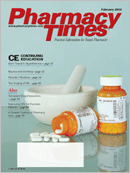A Pharmacist's Guide to OTC Therapy: Choices for Headaches
It is estimated that between 50 million and 70 million individuals in the United States suffer from intermittent headaches. The pain associated with these headaches may be mild or severe in intensity and can be either localized or generalized.
The variety of nonprescription products currently on the market can be overwhelming for many patients. These products usually are the first line of treatment for headache pain. The variety of nonprescription agents available for treating the various types of headaches include systemic (Tables 1 and 2) and topical (Table 3) preparations.
Examples of Types of Headaches
Because patients often seek advice from pharmacists regarding the proper selection of analgesic products for headaches, knowledge of the various types of headaches is essential for pharmacists. Types include the following:
- Cluster
- Hormone-related
- Migraine
- Sinus
- Tension (stress)
Tension and migraine headaches are the most prevalent types.
Possible Triggers of Headaches
- Alcohol consumption
- Certain pharmacologic agents (eg, nitrates, birth control pills, nifedipine)
- Changes in sleeping or eating patterns
- Changes in weather, altitude, and/or air pressure
- Environmental factors (eg, noise, bright lights, certain odors)
- Food sensitivities
- Hormonal changes, such as during menstrual cycle or pregnancy
- Stress/anxiety
The Role of the Pharmacist
Pharmacists can be an indispensable source of information for individuals who suffer from headaches by assisting them in proper product selection based on the type of headache, as well as incorporating preventive measures to reduce the occurrence of headaches. Prior to recommending any nonprescription product, pharmacists should thoroughly evaluate patients' allergy and medical history, especially in those individuals with renal and hepatic insufficiencies; history of gastric ulcers; or clotting disorders. They also should assess the patient's concurrent drug profile to screen for possible contraindications.
Pharmacists should inform patients about the appropriate utilization of these products, as well as adverse effects associated with them. In addition, pharmacists should let patients know when they should seek the advice of a physician.
Ms. Terrie is a clinical pharmacy writer based in the northern Virginia area.

